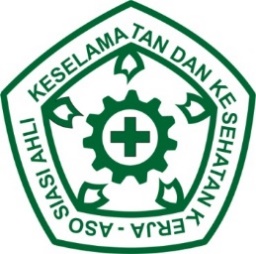Pengaruh lingkungan kerja fisik dan lingkungan kerja non fisik terhadap tindakan keselamatan dan kesehatan kerja (K3) di PT. Mitra Bumi
Abstract
Occupational Safety and Health (OSH) is one of the protection measures aimed at all potentials that can cause danger, so that workers and other people in the workplace are always safe and healthy and all production sources can be used safely and efficiently. The purpose of this study is to determine the relationship between physical work environment (lighting, temperature, noise and humidity) and non-physical (knowledge of workers, behavior based safety, availability of tools and company regulations) to occupational safety and health (OSH) measures and to determine the most important factors. dominant in the physical work environment and non-physical work environment to the Occupational Safety and Health (OSH) action at PT. Mitra Bumi. This research was conducted at PT. Mitra Bumi in January-March 2020. This type of research is a quantitative study with a cross sectional study approach. The results showed that there is a relationship between the physical work environment (lighting, temperature, noise and humidity) to the Occupational Health and Safety (OSH) measures at PT. Mitra Bumi. There is no relationship between the non-physical work environment (workers' knowledge, behavior based safety, availability of company tools and regulations) to Occupational Safety and Health (OSH) actions at PT. Mitra Bumi. The most dominant factor on the action of Occupational Safety and Health (OSH) at PT. Mitra Bumi is a physical work environment, namely lighting and noise.
Keywords
Full Text:
PDFReferences
Ardani, H. N. Santoso, H. Rumita, R. 2013. Analisis Risiko Kesehatan Dan Keselamatan Kerja Pada Pekerja Divisi Mill Boiler (Studi Kasus Di PT. Laju Perdana Indah PG Pakis Baru, Pati. Jurnal Industri 1 (2): 13-21.
Ayu, Permatasari Y. 2013. Hubungan Tingkat Kebisingan dengan Gangguan Psikologis Pekerja di Bagian Weaving di PT. X Batang, Jawa Tengah. J Kesehat Masy Univ Diponegoro.
Azmi, AN. 2016. Hubungan Intensitas Suara Dengan Gangguan Pendengaran Pekerja Unit Kiln Pt . Holcim Indonesia Tbk . Cilacap Plant Tahun 2016. 2016;83–97.
Endroyo, B. 2006. Peranan Manajemen K3 Dalam Pencegahan Kecelakaan Kerja Konstruksi. Jurnal Teknik Sipil 3 (1): 23-30.
Heni, Y. 2011. Improving Our Safety Culture. Jakarta: PT. Gramedia Pustaka Utama.
Hidayati, N.F. Winarko. Tohari, I. 2014. The Factors Relating to Self Protection Tools on the Workers (Study in PT. Japfa Comfeed Indonesia Tbk, the Divition of Techniue and Production) 2014. Jurnal Kesehatan Masyarakat Unnes 12 (3): 26-33.
Ikhsani, A. 2019. Bahaya Potensial Fisik pada Proses Pengolahan Kelapa Sawit PT. Perkebunan Nusantara VII tahun 2019. Jurnal Kesehatan Masyarakat Vol. 10 No.2.
Infodatin Pusat Data dan Informasi Kementrian Kesehatan RI. 2019. Situasi Kesehatan Kerja.
Keputusan Menteri Kesehatan RI Nomor 1405/MENKES/SK/XI/2002 tentang Persyaratan Kesehatan Lingkungan Kerja Perkantoran dan Industri. Jakarta.
Keputusan Menteri Tenaga Kerja RI Nomor Kep.51/MEN.1999 tentang Nilai Ambang Batas Faktor Fisika di Tempat Kerja. Jakarta.
Kholik, HM. 2012. Analisis Tingkat Kebisingan Peralatan Produksi Terhadap Kinerja Karyawan. J Tek Ind.
Notoatmodjo, S. 2010. Ilmu Perilaku Kesehatan. Jakarta: Rineka Cipta.
Peraturan Menteri Kesehatan RI Nomor 70 Tahun 2016 tentang Standar dan Persyaratan Kesehatan Lingkungan Kerja Industri. Jakarta.
Silitonga, N. 2016. Hubungan Kebisingan dengan Pendengaran Pekerja. 2016;51(Hubungan kebisingan dengan pendengaran pekerja):1–7.
Solekhah, S.A. 2018. Faktor Perilaku Kepatuhan Penggunaan Apd Pada Pekerja PT X. Jurnal Promkes Vol. 6 No.1.
Suma’mur, PK. 2014. Higiene Perusahaan dan Kesehatan Kerja. Sagung Seto. Jakarta.
Utama, W. T. 2019. Pajanan Panas dengan Status Hidrasi Pekerja. Jurnal Kesehatan Unila Vol.3.No.2.
Wita, I.W. 2016. Cintailah Jantung Kita. Penerbit Balai Pustaka, Jakarta.
Wulandari, J. 2018. Efek Iklim Kerja Panas Pada Respon Fisiologis Tenaga Kerja Di Ruang Terbatas. Indones J Occup Saf Heal. 2018;6(2):207.
DOI: https://doi.org/10.52364/sehati.v1i2.6
Refbacks
- There are currently no refbacks.
Copyright (c) 2021 Pelantar Press

Ciptaan disebarluaskan di bawah Lisensi Creative Commons Atribusi-NonKomersial 4.0 Internasional.




